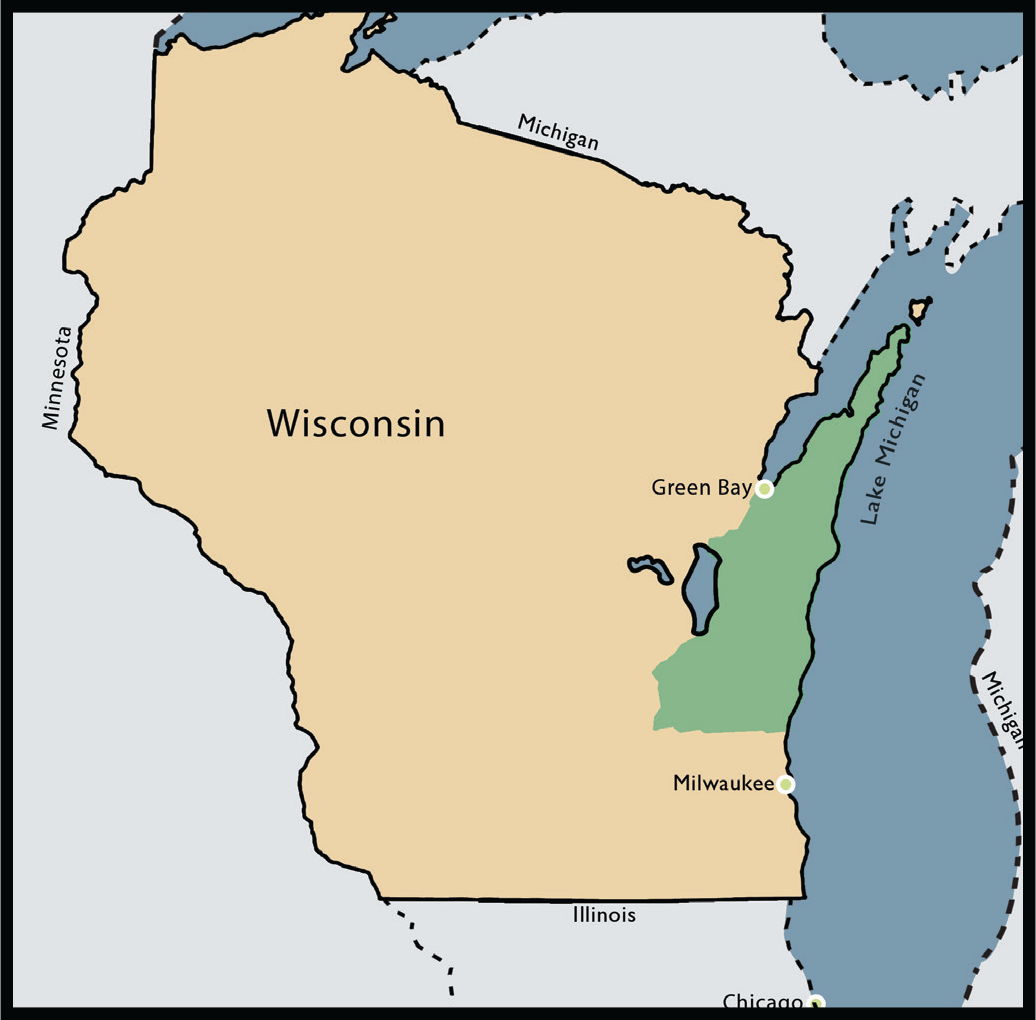An AVA (American Viticultural Area) is a designated winegrowing region with distinct geographic or climatic features that influence the grapes grown there. (from ttb.gov)
What is The Wisconsin Ledge AVA?
Established in 2012, the Wisconsin Ledge AVA covers 11 counties along the Niagara Escarpment. With thin limestone-based soils and a lake-moderated climate, it offers a uniquely balanced growing season that shapes the bright acidity and aromatics of Ledge Blanc wines.
A slow and steady warming in spring offers protection from frost damage to the buds on our grapevines. Our shallow soils reduce vine vigor to balance vegetative growth with fruit development. Lower humidity along with plentiful wind and sun relieve disease pressures in the vineyard. Plentiful rain allows us forgo irrigation. Steady, cooler temperatures let grapes ripen slowly and evenly, avoiding damage to the fruit which can attract pests. Harvest occurs later in the season, when mild temperatures keep the grapes cool and fresh until they reach the cellar.
What shapes the Wisconsin Ledge?
Ledge Blanc is a bright, refreshing, crisp white wine blend from the Wisconsin Ledge AVA. Each producer’s individual blend will be unique while adhering to style, making every bottle a familiar yet enticingly new experience.
what is in a ledge blanc?
The varietals that make up at least 55% of the blend are Itasca, Frontenac Blanc, Frontenac Gris, La Crescent and St. Pepin. The remaining 45% can be any white hybrid grape varietals grown in The Ledge. These varieties deliver the expressive aromatics, vibrant acidity, and complexity typical of a Ledge Blanc. with fruit and floral notes and a hint of minerality and refreshing finish.
winemaking begins in the vineyard
Hybrid grapes are a defining characteristic of Wisconsin Wine, and they are redefining what quality wine can be. Born from generations of pollen crosses between European and native North American grape species, hybrid grape varieties produce world class wines designed for specific growing regions and conditions.
Because they thrive locally, hybrid grapes require fewer resources to grow, easing pressure on our soils and water. Their adaptability makes them a smart, sustainable choice for the future of winemaking—delivering beauty in the bottle with less impact on the land.—without the need for heavy manipulation in the winery. Their natural balance means fewer additives and less intervention, allowing the vineyard to speak for itself.




